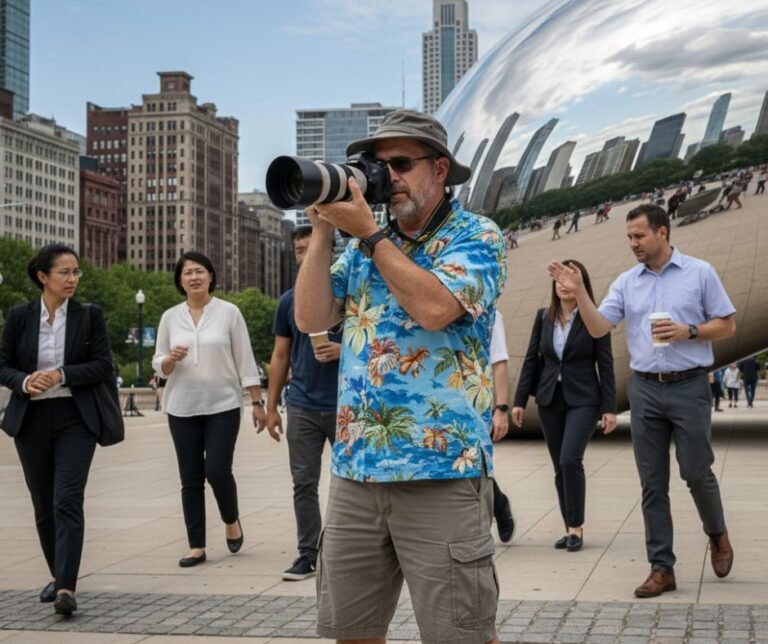The transformation of Chicago over the last 100 years is nothing short of breathtaking.
Familiar landmarks have been dwarfed by modern marvels, and quiet shorelines have erupted into bustling architectural canyons.
To capture this incredible evolution, we’ve collected 10 powerful “Then and Now” photo pairs that showcase the city’s dramatic growth. From the packed beaches of the 1920s to the glittering skyline of today, this is a visual tour through Chicago’s remarkable history.
1. Oak Street Beach in 1923 and 2016
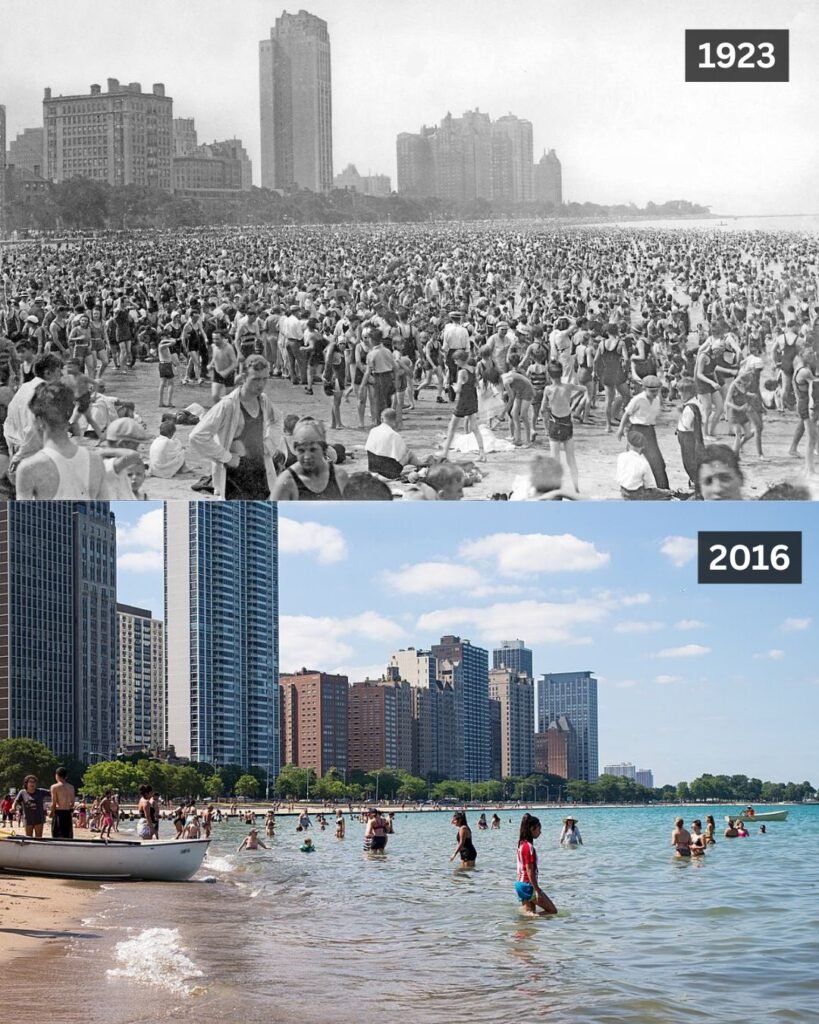
THEN: In the summer of 1923, before air conditioning was a household luxury, Oak Street Beach was the city’s communal escape. This incredible photo captures a sea of humanity, with Chicagoans in their woolen bathing suits packing the shoreline to find relief from the heat. In the background, a young skyline takes shape. The iconic Drake Hotel stands proudly on the left, but many of the towering glass and steel giants we know today are still decades away. This wasn’t just a beach; it was the vibrant heart of Chicago’s summer social scene.
NOW: Over ninety years later, the scene is both familiar and dramatically different. While Chicagoans still flock to this famous curve of sand, the skyline behind them has exploded into a dense forest of modern architecture. The John Hancock Center now towers over the historic Drake Hotel, and Lake Shore Drive has become a bustling eight-lane highway. While the crowds may be a little smaller and the swimsuits a lot lighter, the simple joy of a sunny day on the lakefront remains a timeless Chicago tradition.

Discover The Chicago
You Don’t Know
Join 20,000+ locals getting the inside scoop. Discover hidden gems, secret events, and the best Chicago has to offer.
2. Chicago South Branch Pictured in 1860 and 2016

THEN: This is not just an old photo of Chicago; it’s a window into a lost world. Pictured in 1860, a full decade before the Great Fire, the Chicago River was a gritty, bustling artery of commerce. The skyline consisted of low-rise brick warehouses and a forest of wooden masts from the sailing ships that fueled the young city’s explosive growth. This was a city built on industry, a vital trading hub that was about to face a trial by fire.
NOW: From the ashes of the Great Fire, a new Chicago rose, and this view is its ultimate testament. The once muddy river has been transformed into a majestic architectural canyon. The wooden ships and warehouses are gone, replaced by a breathtaking corridor of glass and steel giants that scrape the clouds. Today, the river is a showpiece, a recreational centerpiece where tour boats glide past works of architectural genius. This single view captures the city’s legendary resilience and its relentless ambition to build bigger and bolder.
3. Aerial View of Grant Park, Pictured in 1929 and 2016

THEN: In 1929, Grant Park was truly living up to its name as “Chicago’s Front Yard.” The magnificent Buckingham Fountain, just two years old at the time, served as the park’s formal centerpiece. Behind it, an elegant Art Deco skyline rose with dignity. But look closely to the north (the upper right of the 1929 photo), and you’ll see a sprawling landscape of smoke and steel—the Illinois Central rail yards, an industrial scar on the pristine lakefront.
NOW: The growth is simply staggering. The once-proud 1920s skyline is now nestled among a forest of modern super-talls, including the iconic Willis (Sears) Tower. But the most incredible transformation is what happened to those ugly rail yards. They have been replaced by the world-renowned Millennium Park, a cultural jewel sparkling with landmarks like “The Bean” and the Pritzker Pavilion. Grant Park is no longer just a front yard; it’s a world-class destination, proving Chicago’s unparalleled commitment to its public lakefront.
4. Wrigley Field – Pictured in 1915 and 2016
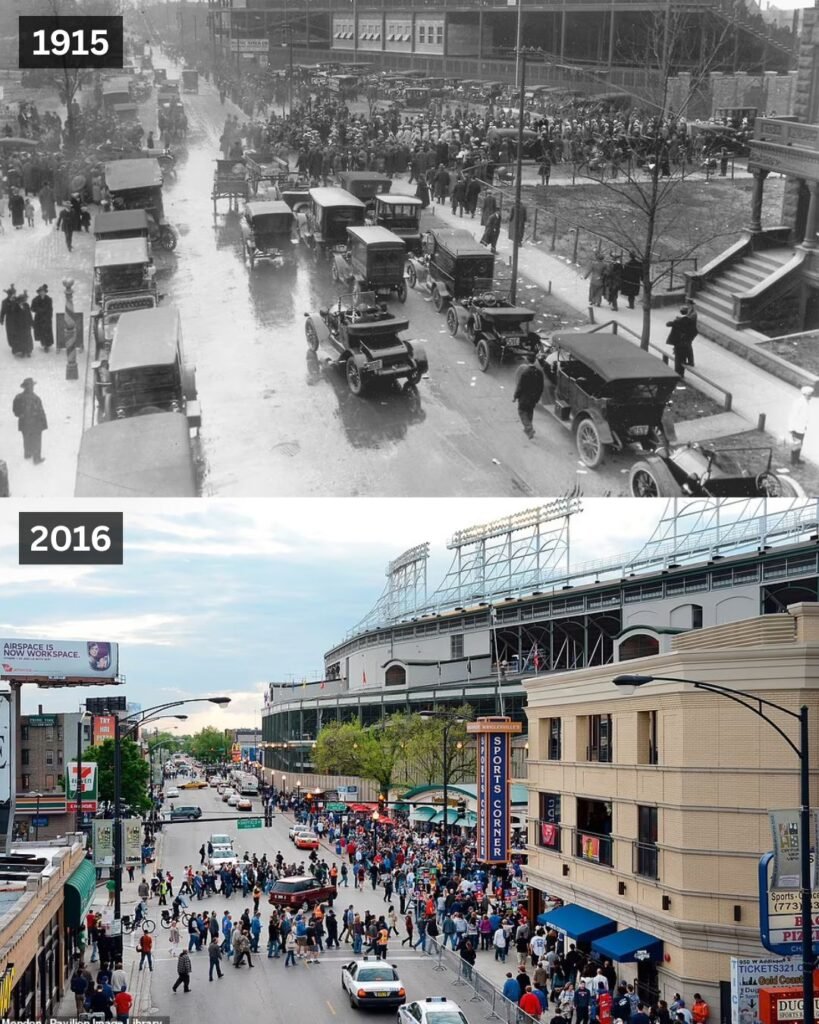
THEN: In 1915, a simple, single-deck ballpark stood surrounded by muddy streets and early model cars, the humble beginning of a future legend. The surrounding neighborhood is sparse, and as Weeghman Park, it was just a year old. This photo captures the raw, undeveloped feel of the area before it became the bustling Wrigleyville entertainment district we know today.
NOW: Over a century later, the “Friendly Confines” has transformed into a towering landmark, captured here in the historic year the Cubs would finally win the World Series. The entire neighborhood has been built up around it, with the intersection of Clark and Addison now a sea of fans, bars, and restaurants. The ballpark’s growth mirrors the city’s, but its soul remains the timeless anchor of the North Side.
5. North Michigan Avenue – Pictured in 1950 & 2022
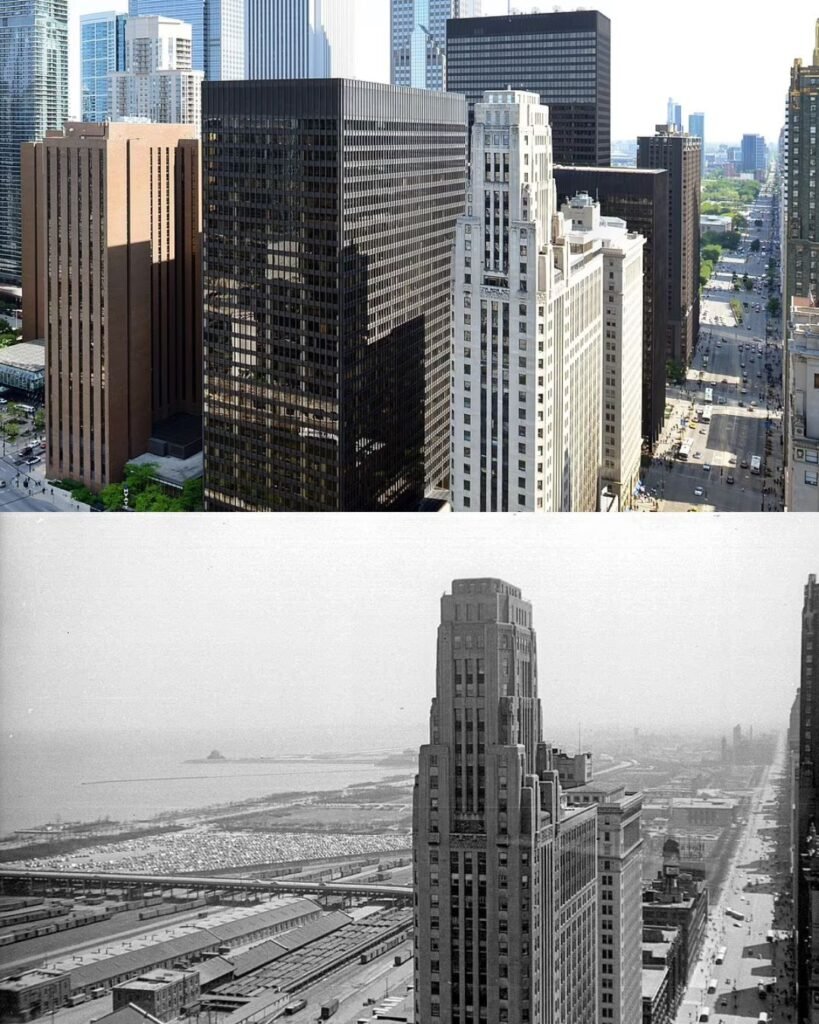
THEN: In 1950, the magnificent Art Deco tower at 333 North Michigan Avenue wasn’t just a building; it was a perch with an unparalleled view. It stood proudly near the edge of the city’s core, looking down upon the sprawling Illinois Central rail yards and out across an open expanse towards Navy Pier and the vast, shimmering horizon of Lake Michigan.
NOW: The perch is now a canyon. Today, this beautiful historic skyscraper is nestled deep within a dense forest of modern glass and steel. The rail yards are long gone, replaced by architectural giants like the Prudential Plaza and the Aon Center. The once-unobstructed view of Lake Michigan has been completely claimed by decades of relentless development. It’s a breathtaking look at how a city can grow up and around its landmarks, creating one of the most impressive urban landscapes on Earth.
6. Art Institute of Chicago, Pictured in 1895 and 2016
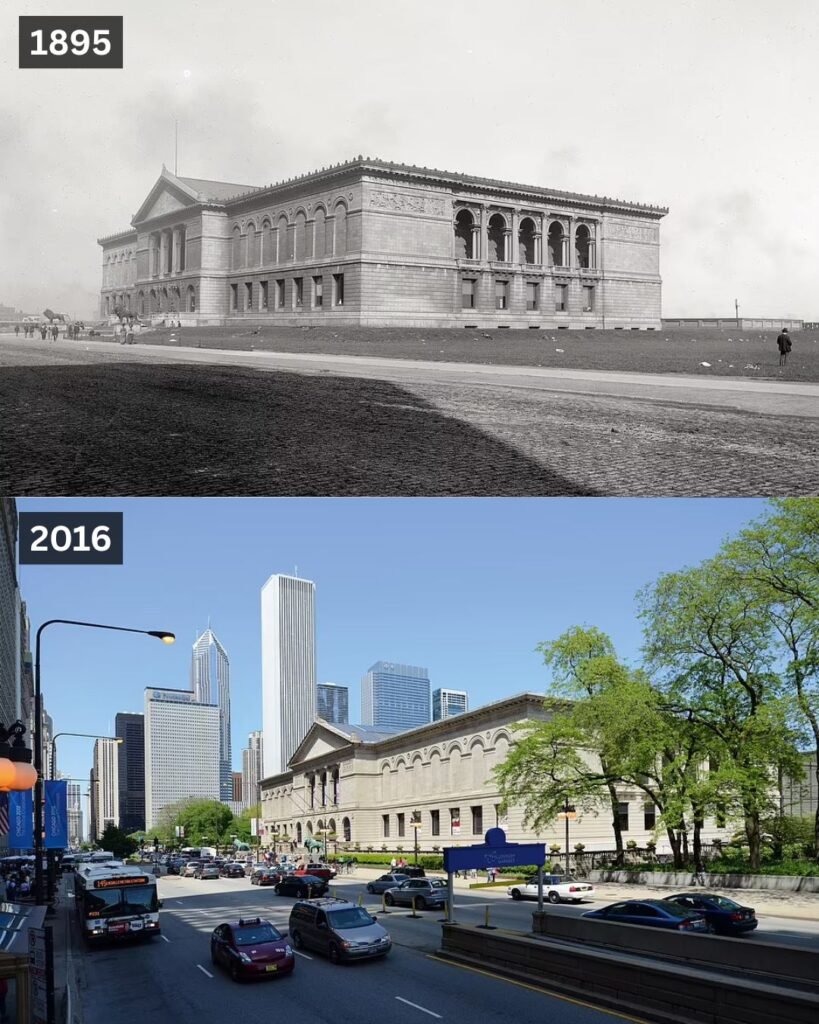
THEN: In 1895, just two years after it was built for the World’s Columbian Exposition, the Art Institute of Chicago stood in stately isolation. Facing a quiet, unpaved Michigan Avenue with horse-drawn carriages trotting by, it was a grand beacon of culture on the edge of a still-young city. The land behind it was open, with the horizon defined by the museum itself, not by a towering skyline.
NOW: Today, the iconic building remains, but its surroundings are from another world. Michigan Avenue is a bustling artery of traffic, and the once-barren ground is now lush with mature trees. Most dramatically, the empty sky behind the museum has been filled with a dense wall of legendary skyscrapers, including the Aon Center and the Prudential Plaza. The Art Institute is no longer on the edge of the city; it is the timeless cultural heart, now embraced and framed by the magnificent modern metropolis it helped to inspire.
6. Michigan Avenue
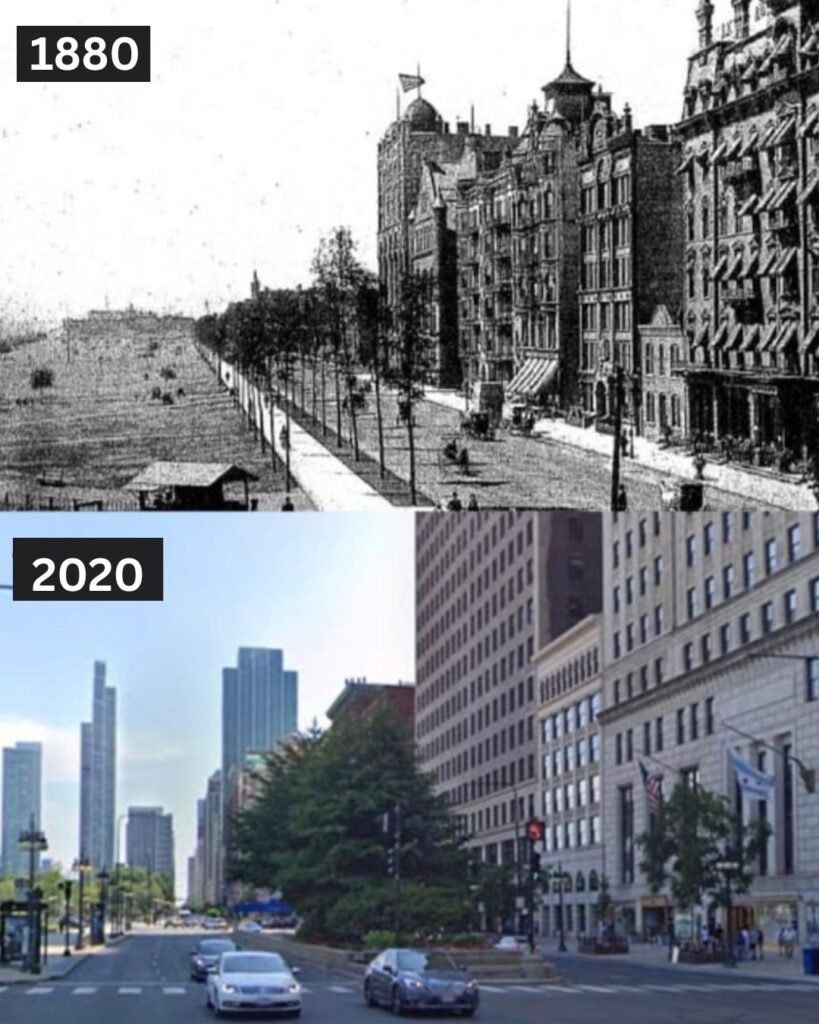

Discover The Chicago
You Don’t Know
Join 20,000+ locals getting the inside scoop. Discover hidden gems, secret events, and the best Chicago has to offer.




